East Africa’s biggest book fair and a packed cultural calendar jostle for space with bleating camels and peaceful hills in Somalia’s second-biggest city.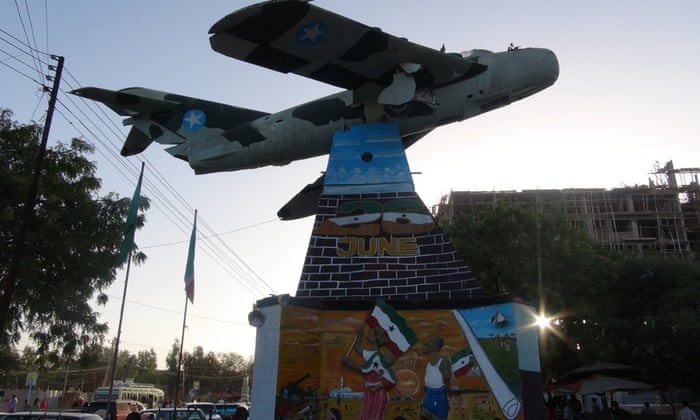
In five words
Sunny, peaceful, surrounded by hills
What sound defines your city?
It’s normal to see livestock in Hargeisa’s streets and hear the bleat of goats, camels and sheep. Hargeisa’s population depends economically on livestock production and trade. The sound here is mainly goats and sheep in one of Hargeisa’s bustling livestock markets.
Everyone’s tuning into …
Fanka iyo Suugaanta (which means “culture and arts”) is a popular weekly TV show aired on HCTV – a Somali TV station. Somali poets, singers and other artists are interviewed in this show. Almost everyone watches it, particularly young people. In this episode, the renowned singer Mohamed Said, known as BK, is the guest.
Best current venue?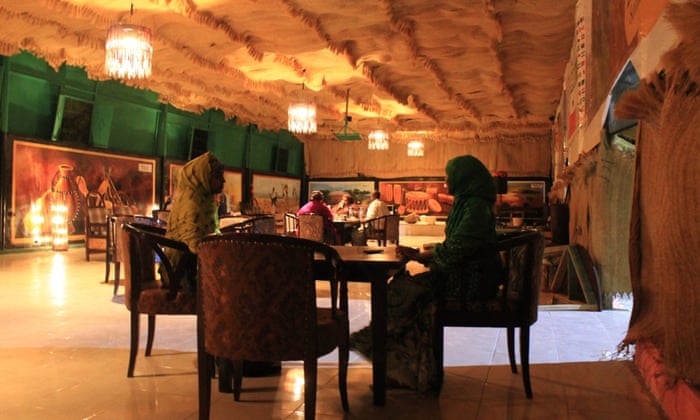 Hiddo-Dhowr, a traditional Somali restaurant, is a place everyone visits – sometimes twice a week. Musicians and singers entertain the diners while they eat, singing both traditional and modern Somali songs on request. It’s the first of its kind to open in Hargeisa. Sahra Halgan, the owner, is herself a famous Somali singer and has recently returned from France to open the restaurant.
Hiddo-Dhowr, a traditional Somali restaurant, is a place everyone visits – sometimes twice a week. Musicians and singers entertain the diners while they eat, singing both traditional and modern Somali songs on request. It’s the first of its kind to open in Hargeisa. Sahra Halgan, the owner, is herself a famous Somali singer and has recently returned from France to open the restaurant.
Who’s top of the playlist?
Xiddigaha Geeska (The Horn Stars) are a group of young and talented singers that are very popular in Hargeisa and all over Somalia.
They sing about nationalism and patriotism as part of a nationwide campaign made by the group during the national independence day celebrations on 18 May.
Favourite local artist
Hassan Dahir, widely known as Weedhsame, is a poet popular among the younger generation in Somalia. His poems habitually focus on the social and political issues of the country.
The look on the street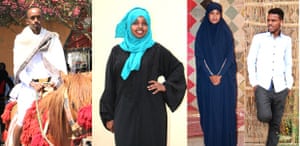 Hargeisa’s street style is hybrid: religious, traditional and modern. There is a clash of cultures caused by this hybrid. The traditional way of dressing, such as the young man on the horse, is favoured by the older generation, whereas the more contemporary style of shaven heads, trousers and headphones favoured by the young is discouraged by the elder generation.
Hargeisa’s street style is hybrid: religious, traditional and modern. There is a clash of cultures caused by this hybrid. The traditional way of dressing, such as the young man on the horse, is favoured by the older generation, whereas the more contemporary style of shaven heads, trousers and headphones favoured by the young is discouraged by the elder generation.
The Hargeisa Cultural Center was opened in August 2014. Since its establishment, it has become an important feature in Hargeisa’s cultural landscape. It has an art gallery hosting both permanent and temporary art exhibitions, a rare books collection and a fully functional modern theatre. While being very contemporary, the building still takes its design from the traditional Somali aqal hut.
What’s the big talking point?
The House of Elders – Somaliland’s upper house of parliament – recently extended the tenure of the incumbent president and this brought the opposition parties leaders and the public out in protest. Almost everyone is debating the issue because, while democracy is what the country has adopted for the past 15 years, the public wants the elections to be held on time.
What your city does better than anyone …
Hargeisa is known as “the mother of Somali arts and culture”. Every night, a book launch, poetry event or gig takes place. If you are lucky, you might see Hirwo – a traditional Somali dance – taking place. For this dance, the men and women start by shouting praise at each other. After this, the dance begins to the soundtrack of clapping hands rather than music.
Big cultural moment
Hargeysa International Book Fair (HIBF) is the main cultural event in Somaliland and one of the largest public celebrations of books in East Africa. HIBF has been running annually in Hargeisa for the past seven years. It brings together writers, poets, artists and thinkers from Somaliland and all over the world to share and discuss their art. The main aim of the festival is to promote a culture of reading and writing in the country, by producing and publishing high-quality Somali literature and translating international classical literature. The eighth Hargeysa International Book Fair will take place from 1 to 6 August 2015 with the theme of “spaces”.
Best street art?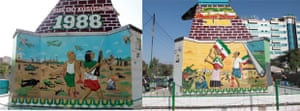
Although Hargeisa is not that familiar with street art, the steel monuments standing in Hargeisa’s midtown pay tribute to what Somalilanders went through to regain their independence.
Regarded by locals as Hargeisa’s war memorial, the murals were originally painted by Mohamed Sharif (known as Al-Cataaz Arts), a local artist, in 2002. Often updated by other artists, the monument depicts how Somalia’s military regime bombed Hargeisa during the 1980s war between the government troops and Somali National Movement fighters. That bombardment, along with extra-judiciary executions, led to the death of 200,000 men, women and children, according to the government’s genocide commission.
_____________________________________
From me
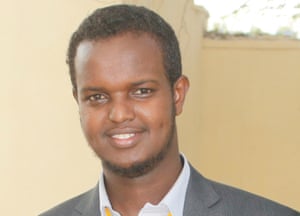
Barkhad Kaariye is the founder of Somali Investigative Reports and has worked with BBC Media Action as a producer, presenter and blogger. Currently, he works with Voice of America’s Somali Service as a stringer.
You can find him on twitter @BarkhadKaariye or on LinkedIn.
Source: The Guardian




























